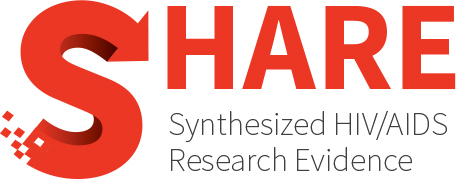Strategies for effectively communicating the risk of HIV transmission
Abstract
Key take-home messages
- Probability information alone may not be an effective way of communicating HIV risk information. Information about what causes a health problem, how severe the consequences of that problem will be, and what can be done to treat or prevent the problem can contextualize risk information and allow people to create a mental picture of the problem’s personal relevance.
- Adding contextual information to probability and statistical information allows it to be more reliably interpreted and more easily called to mind when needed.
- Risk scenarios are a tool that can help contextualize risk information. There is a stronger perception of personal risk when an individual reads a greater number of HIV risk scenarios.
- The more an individual identifies with a risk scenario, the stronger the effect on their perception of risk. Having someone write their own scenario increases perceived susceptibility to HIV transmission compared to reading a pre-written scenario.
- Pairing frequency risk information (e.g., probability rates) with a scenario is an effective way to convey behaviour change messages.
Authors
The Ontario HIV Treatment Network: Rapid Response Service
Year
2017
Topics
- Population(s)
- General HIV+ population
- General HIV- population
- Prevention
- Sexual risk behaviour
- Education/media campaigns
- Health Systems
- Delivery arrangements
